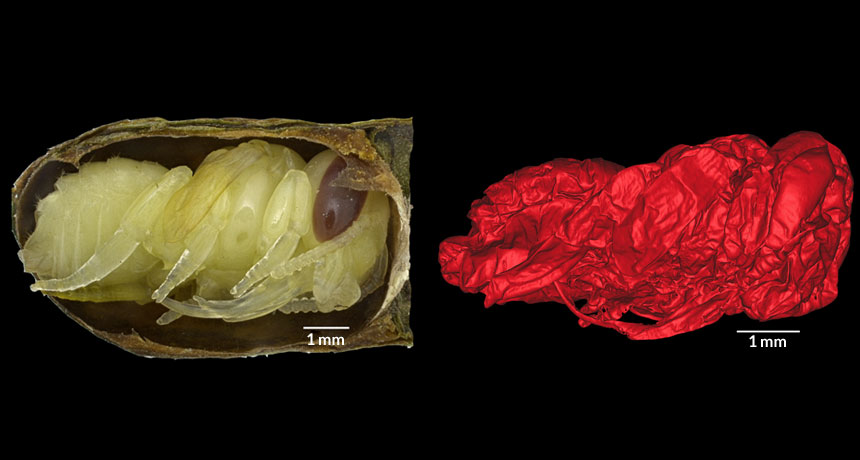La Brea Tar Pits yield exquisite Ice Age bees
Ancient pupae snug in leaves give clues to climate

NOW AND THEN A pupa of a modern leafcutter Megachile bee female (left) has the same basic look as a Megachile male (right, CT scan) that is at least 23,000 years old, having been preserved in the La Brea Tar Pits.
A.R. Holden et al/PLOS ONE